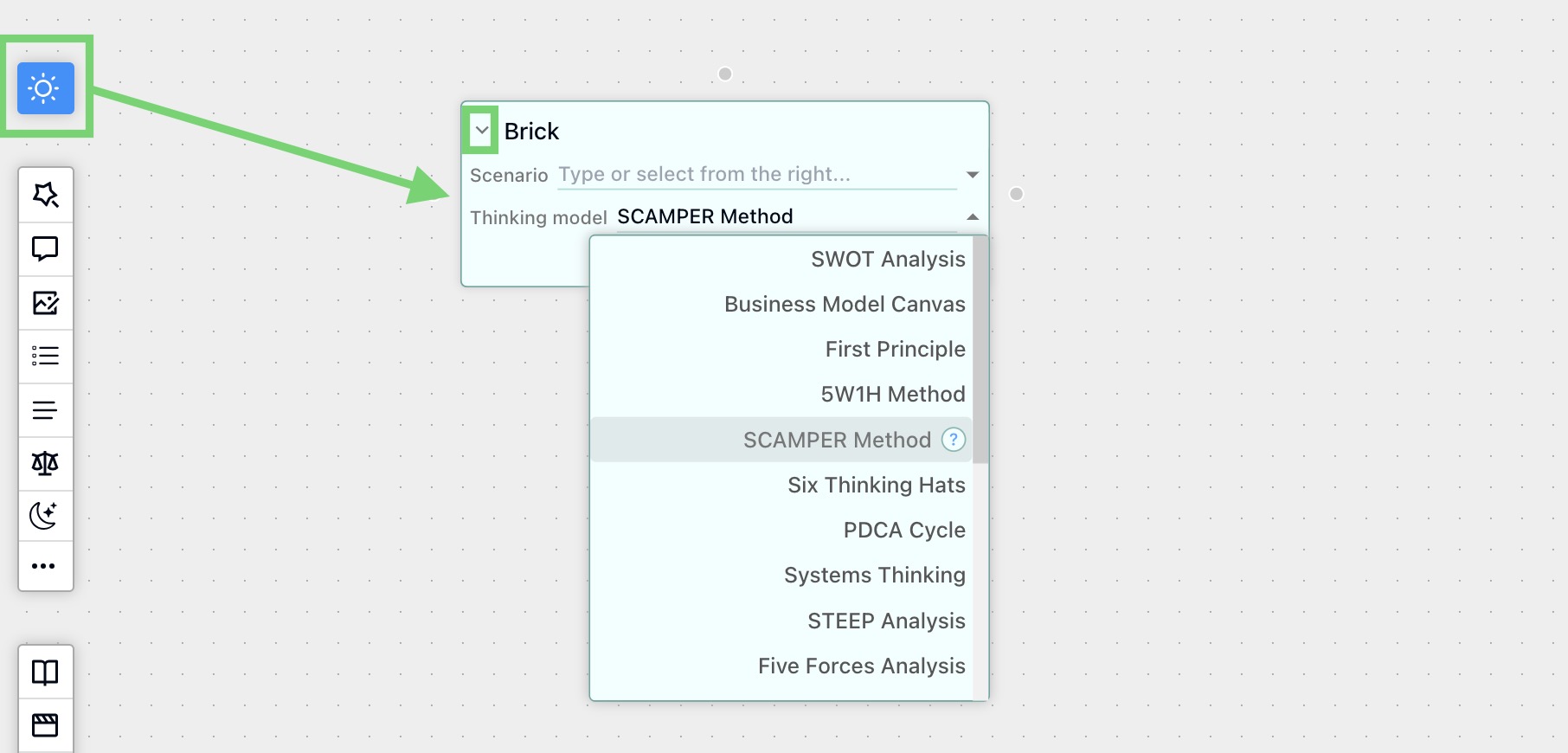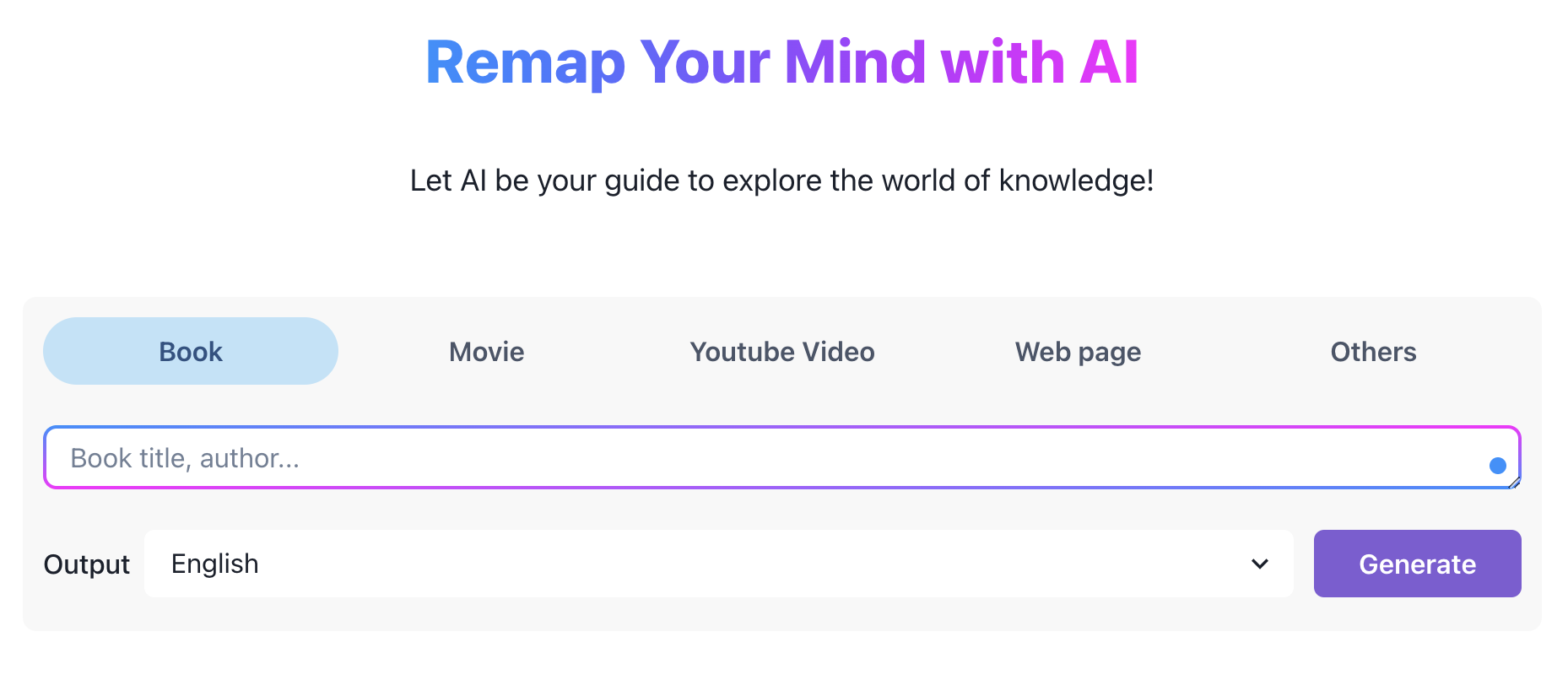Mind Mapping
Visualize Ideas & Build Knowledge Networks
Mind mapping is a highly effective visual thinking technique that helps you capture, organize, and explore information in a way that aligns with how your brain naturally works. It's a versatile tool for everything from note-taking to project planning. This guide covers the fundamentals of mind mapping and demonstrates how FunBlocks AIFlow elevates the process.
What is Mind Mapping?
A mind map is a diagram used to visually organize information around a central concept. It features a central topic in the middle, with related ideas branching out in a non-linear, graphical manner. Think of it like a tree, with the main topic as the trunk and related ideas as branches and sub-branches.
Core Elements:
- Central Topic: The main subject or idea placed in the center.
- Main Branches: Key themes or categories radiating directly from the central topic.
- Sub-Branches: More detailed points branching off the main branches.
- Keywords: Using single words or short phrases on branches instead of long sentences.
- Color & Images: Using colors and icons/images to categorize information and enhance recall.
The Power of Mind Maps: Why Use Them?
Mind maps offer numerous cognitive benefits:
- Big Picture & Detail: See the overall structure and connections while still capturing specific details.
- Boosts Association & Creativity: The radial structure encourages free association and helps spark new ideas by linking concepts visually.
- Enhances Memory & Understanding: Combining keywords, colors, and structure leverages multiple aspects of your brain, improving retention and comprehension.
- Efficient Organization: Quickly structure notes, meeting minutes, or complex information logically.
How to Draw an Effective Mind Map
Creating a mind map is intuitive:
- Start in the Center: Place your main topic or idea in the middle of your canvas (digital or physical).
- Create Main Branches: Draw thick branches radiating outwards for the primary themes related to your central topic. Label them with keywords.
- Add Sub-Branches: Branch off the main branches with more specific details or sub-topics. Use thinner lines. Continue branching as needed.
- Use Keywords & Visuals: Keep text concise (keywords are best). Use different colors for main branches and add icons or small images to make it more memorable and engaging.
- Maintain Clarity: Ensure clear hierarchy and connections. Use curved lines, as they are more natural for the eye to follow.
Common Applications of Mind Mapping
Mind maps are incredibly versatile:
- Note-Taking & Summarizing: Capture key points from lectures, books, or articles.
- Knowledge Management: Build personal or team knowledge bases visually.
- Project Planning: Outline project phases, tasks, resources, and dependencies.
- Writing & Presentations: Structure articles, reports, or presentations; brainstorm content ideas.
- Meeting Agendas & Minutes: Plan meeting flow and capture key decisions and action items visually.
- Problem Solving: Break down complex problems and brainstorm potential solutions on different branches.
How FunBlocks AIFlow Enhances Mind Mapping
At its core, FunBlocks AIFlow is an llm-powered AI assistant, by visualizing information through mind maps, it transforms how users engage with AI. It goes beyond traditional chat-based AI tools, enabling users to think critically and explore ideas from different angles.

Moreover, FunBlocks AIFlow incorporates creative thinking tools within the mind mapping interface, boosting idea generation.

FunBlocks AIFlow also uses advanced language models to automatically create detailed and organized mind maps from various sources, including text, web pages, books, movies, and YouTube videos. This feature allows users to quickly grasp essential information, improving their understanding and memory retention.

In summary, FunBlocks AIFlow is not just a tool for organizing thoughts. It is an AI-driven platform that improves cognitive skills and efficiency through effective mind mapping.
Summary & Tips for Effective Mind Mapping
Mind mapping is a skill that gets better with practice. Here are some key tips:
- Start with a clear central topic.
- Use keywords instead of full sentences.
- Incorporate colors and images to enhance understanding.
- Keep a clear and organized structure.
- Use mind mapping to clarify your thoughts and learn faster.
- Leverage FunBlocks AIFlow for AI-powered efficiency and productivity.
Ready to visualize your thoughts? Create your first Mind Map in FunBlocks AIFlow today! After organizing your ideas, learn how to evaluate them using Critical Thinking.